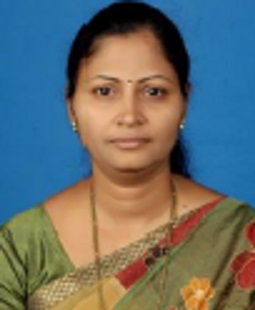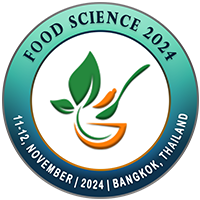
Usha Rayalcheruvu
Sri Padmavati Mahila Visvavidyalayam(Women’s University-SPMVV), IndiaTitle: Tomato Leaf Curl Virus: Current Status and Challenges
Abstract
Tomato (Lycopersicon esculentum L.) is a herbaceous fruiting plant belonging to the family Solanaceae. It has become one of the most popular and widely cultivated vegetable crops of the world with ability to survive in diverse environmental conditions. In Asian countries, china is the largest tomato producer in the world with 56,423,811 tonnes production volume per year. India comes second with 18,399,000 tonnes yearly production. Unfortunately, numerous pathogens influence the cultivation of this crop. Among them, Tomato leaf curl virus disease (ToLCVD) is the most dominant and one of the most devastating virus diseases of tomato crops in tropical and subtropical regions. The causal agents are a group of virus species of the genus Begomoviruses, family Geminiviridae, all of them, Tomato leaf curl virus (ToLCV), that are transmitted by the white¯y Bemisia tabaci. It was reported a serious problem in Albay in 1968, leaf curl disease of tomato is one of the most prevalent, particularly during March to May and can drastically reduced yield up to 80% .
Whitefly-transmissible Gemini viruses (family Geminiviridae, genus Begomoviruses) are serious pathogens of a large number of important crop plants in tropical and subtropical areas worldwide. Many of the diseases that they cause are among the world’s most economically significant diseases, resulting in yield losses ranging from negligible to 100% and amounting to more than US$7 billion in value of food and export crops. Economically important diseases caused by Begomoviruses include leaf curl and mosaic diseases of cassava, cotton, tomato, pepper, tobacco, bean, and cucurbits.
Begomoviruses infect dicots and are vectored Effective management of these diseases entails early detection and breeding for resistance. Development of resistant cultivars necessitates a sound knowledge of the virus, its variants, and their distribution. This requires rapid and accurate techniques for virus detection and subsequent identification to facilitate studies of virus epidemiology and genetic diversity. This information would be important in the design of more efficient crop protection strategies.
Biography
R. Usha obtained her Master’s Degree in Botany from Sri Venkateshwara University, Tirupati. She received Ph.D from Sri Venkateshwara University, Tirupati for her research on, “Secondary Metabolite Production through Tissue Culture in Artemisia pallens(Davana) and Artemisia annua (Sweet Wormwood, Annual Wormwood).” She joined as a Lecturer in Sri Padmavati Mahila Visva vidhyalayam (Women’s University), Tirupati in the year 2001 and now she is a Professor, Department of Biotechnology from 2013 to till date. Sha has made significant contributions to micropropagation of secondary metabolite production, as well as her studies on biochemical characterization, isolation and cloning of the gene. She has also worked on molecular characterization of anticancer agents from Momordica charantia and Bixa orellana Linn., a natural dye yielding plant, and Phytoremediation of heavy metals. Her goal is to increase the agricultural yield of plants in stress conditions by targeting abiotic stress tolerant genes and developed diagnostic methods for Virus. Her most recent studies have been dissected on molecular mapping of Kernel micronutrients in biomedical fields due to their immanent therapeutic performance. She is a recipient of Associate fellow of A.P. Academi of Sciences-2007 and Talented Scientist Award in recognition of her outstanding contribution in the field of Biotechnology at International Level, in the World Congress on Pharmaceutical sciences and chemical technology, held during 16th – 18th December 2013 at Colombo, Sri Lanka, INSA Visiting Fellow granted by Indian Institute of Science Academy, New Delhi, 2017 and Awarded as “Bright idea innovator”- 2019- DSIR-Tepp in association with National Academy of Veterinary Sciences(India),New Delhi. Recently she has received NESA EMINENT SCIENTIST OF THE YEAR AWARD-2020 by the National Environmental Science Academy, New Delhi.

